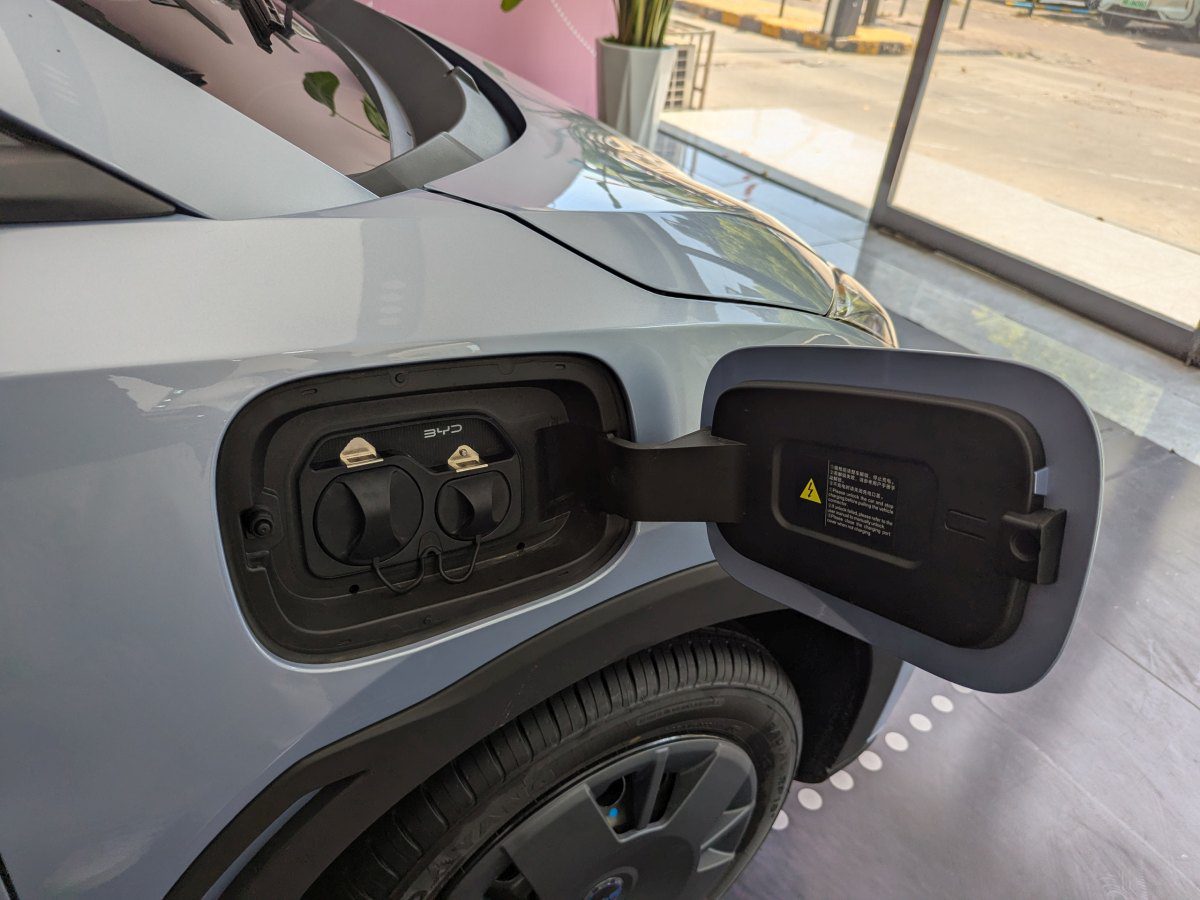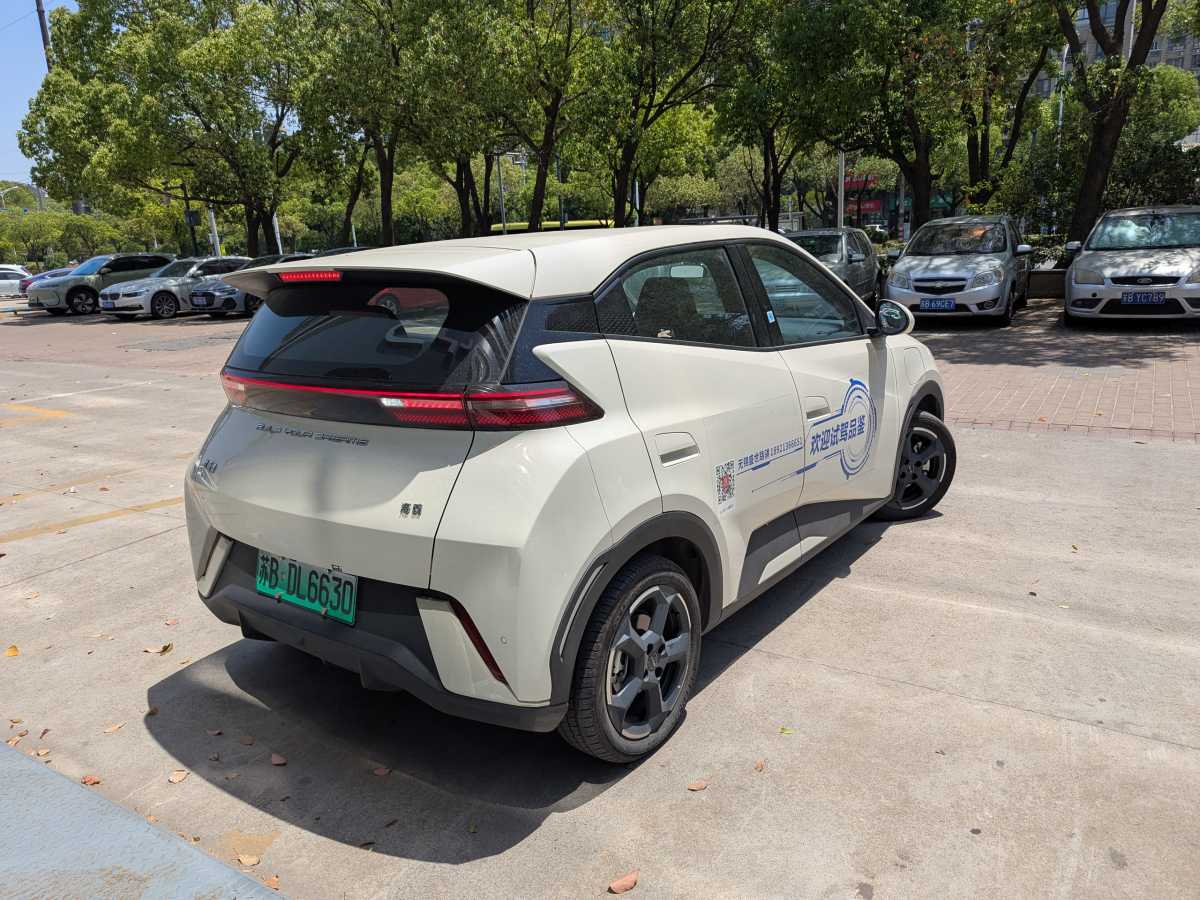BYD has been one of the fastest-growing car companies in recent years, and here in Australia, the brand has continued to deliver affordable electric options.
One of the company’s most affordable models, the BYD Seagull, recently saw thousands of units head to Europe, but there has not been much indication of whether it would come to Australia.
While I was in China recently, I got a chance to get behind the wheel of one, and it was quite an eye-opener. Here are some of the key things I picked up, and why this car could do really well in our local market, if it does head down under.
Firstly, starting with the price, which in China starts at the equivalent of less than $A16,000 and goes all the way up to $A19,700.
From the outside, it’s just shy of 3.8 metres in length, making it relatively compact but still a bit bigger on the outside than the 3.6 metres long Kia Picanto ICE city car, which starts at around $22,000 driveaway for the Sport Automatic variant.
Getting into the Seagull was quite easy, thanks to its 150 mm ground clearance. When inside, there is quite a bit of space.

Even in the rear, with the seat set to my driving position, there was enough space for most city and suburban trips.
Although, it’s quite an affordable model, there is nothing “cheap” about the materials used inside. To me, it felt a lot closer to the locally available BYD Dolphin in terms of the seat and cabin materials, which is quite outstanding given its entry-level pricing.
For those familiar with the BYD interior, at a glance, the Seagull’s interior is pretty similar to the Atto 3 and Dolphin, which makes you wonder, where the cost reductions in this model might be.
The boot also had a good amount of space, particularly for moving things around and with folding the rear seats, it becomes quite a usable space when moving things around.
From a tech point of view, you do find a smaller infotainment screen that offers navigation and other entertainment functions, which I couldn’t take any points off, given its ICE competitors in Australia don’t offer anywhere as much.
On the road, everything we know about micro cars comes to life but given it’s an EV, it packs a lot more.
Firstly, it’s the cabin noise, which is quite well insulated. Over the years, I have owned a fair share of micro cars, including the Daihatsu Sirion and the Toyota Startlet back in my uni days, and getting those cars up to speed ,even in the city, took a bit of effort with the engine revving quite high.
The Seagull was nothing like that. Thanks to its front-mounted single-motor drivetrain that can deliver up to 55 kW of power, it was zippy around the streets of Wuxi, which by the way is a modern, yet cultural city, definitely worth visiting.
Having an official 0-50 km/h time of just 4.9 second, getting off the line would with that electric torque is an easy. 0-100 km/h comes in just over 12 seconds.
For comparison, the Kia Picanto does the same sprint in 6.5 seconds, getting up to 100 km/h in 15.4 seconds.
On the battery front, the BYD Seagull comes with two battery sizes, 30.08 kWh and 38.88 kWh. Both feature BYD’s lithium-iron-phosphate (LFP) battery chemistry.
The larger battery of 38.88 kWh can deliver up to 405 km of CLTC range, which is more likely to be around 300 km on the WLTP cycle.

This larger pack is the one I got behind the wheel of, which is plenty of range and even comes with reasonably fast charging speeds.
While DC charging, it can also be charged from 30-80% in just 29 minutes, which is quite good once again given its price point.
When in China, I saw plenty of BYD Seagulls on the road, and the sales data confirms just that. Last month, it was the third best-selling car in China with 33,965 sales.
That’s behind the Wuling-Mini hatchback, which is priced similarly and the country’s best-selling car in April, the Tesla Model Y SUV, which raked up over 48,000 units.
The BYD Seagull was launched at the Shanghai auto show in April, 2023. It was reportedly the star of that show, raking in thousands of orders in only a few days of being there.

BYD began deliveries of the vehicle in its home market soon after the launch, and just six months later, still in 2023, had produced 200,000.
Ever since then, I have wanted to test-drive one, and in 2025, when I finally did, it was quite an experience, which highlights that electric motoring can be the cheapest form of personal transport.
It’s a low cost car, but it’s not a “cheap” car. I would call it a value-packed EV that Australia desperately needs to reduce its transport emissions in our major cities, sooner.

Riz is the founder of carloop based in Melbourne, specialising in Australian EV data, insight reports and trends. He is a mechanical engineer who spent the first 7 years of his career building transport infrastructure before starting carloop. He has a passion for cars, particularly EVs and wants to help reduce transport emissions in Australia. He currently drives a red Tesla Model 3.


